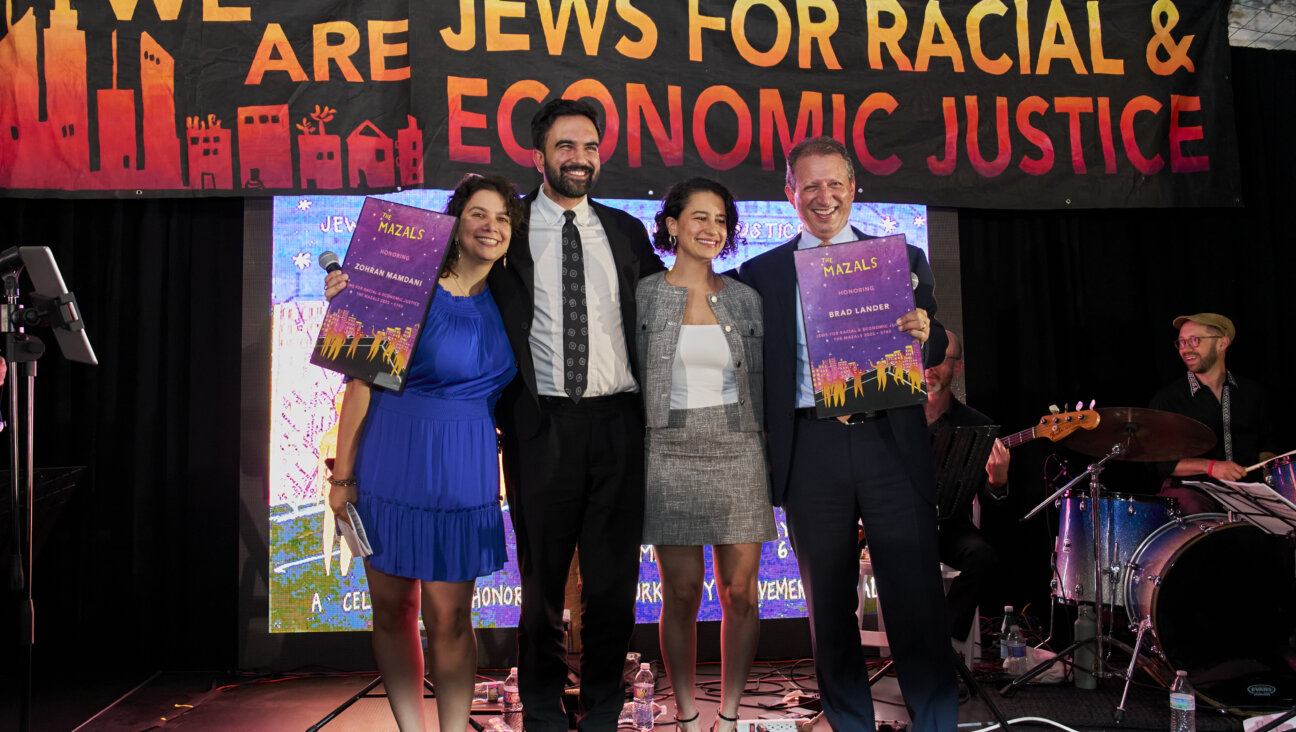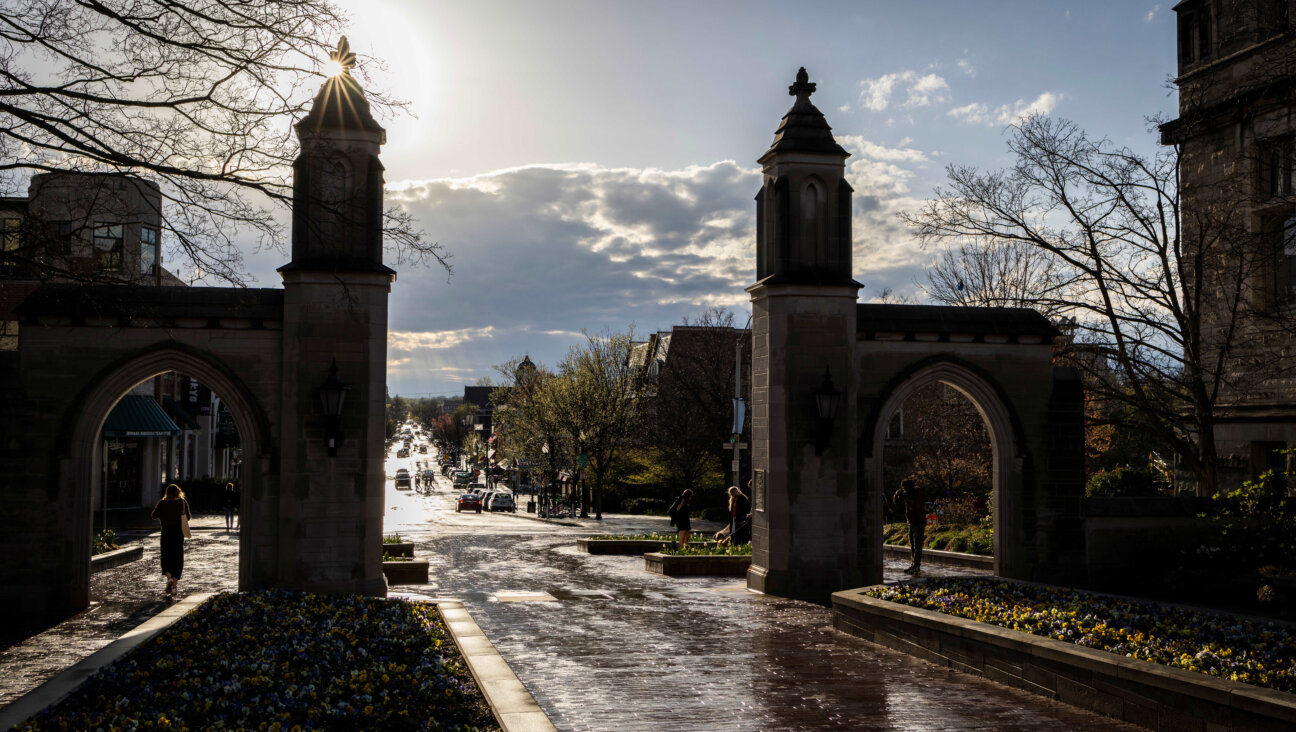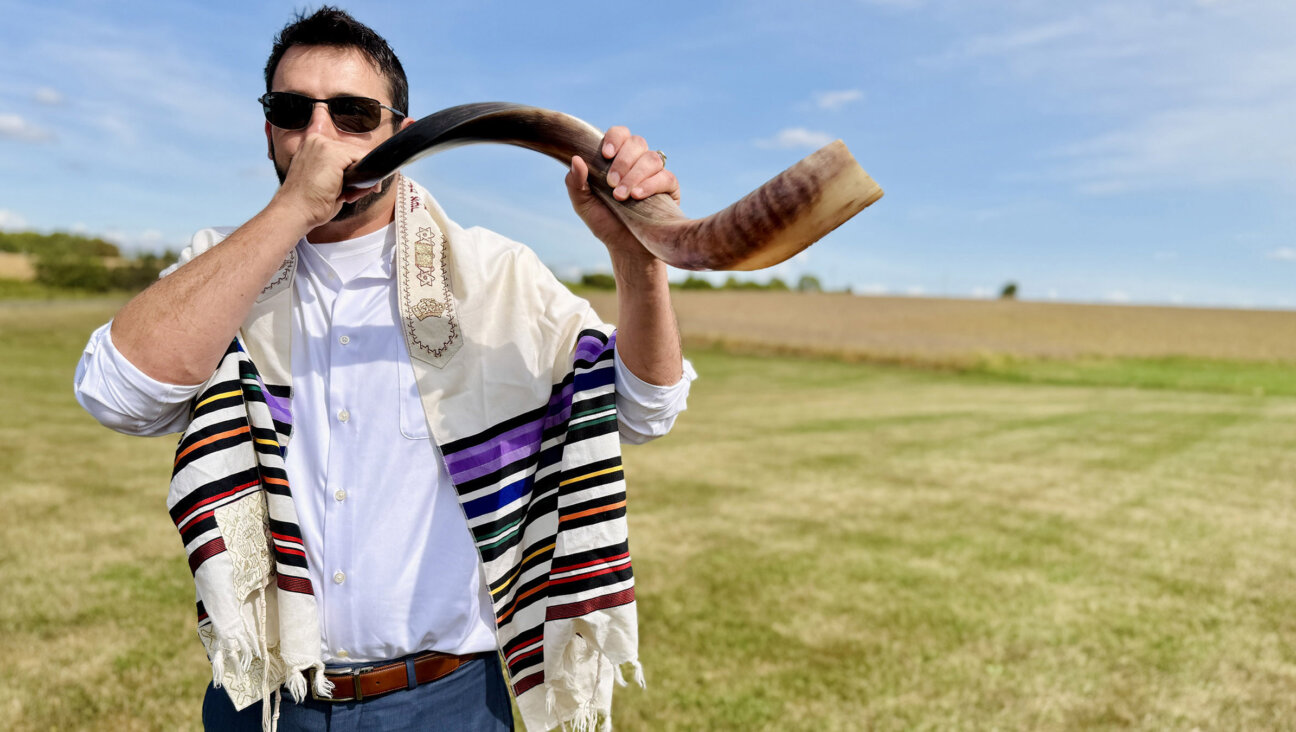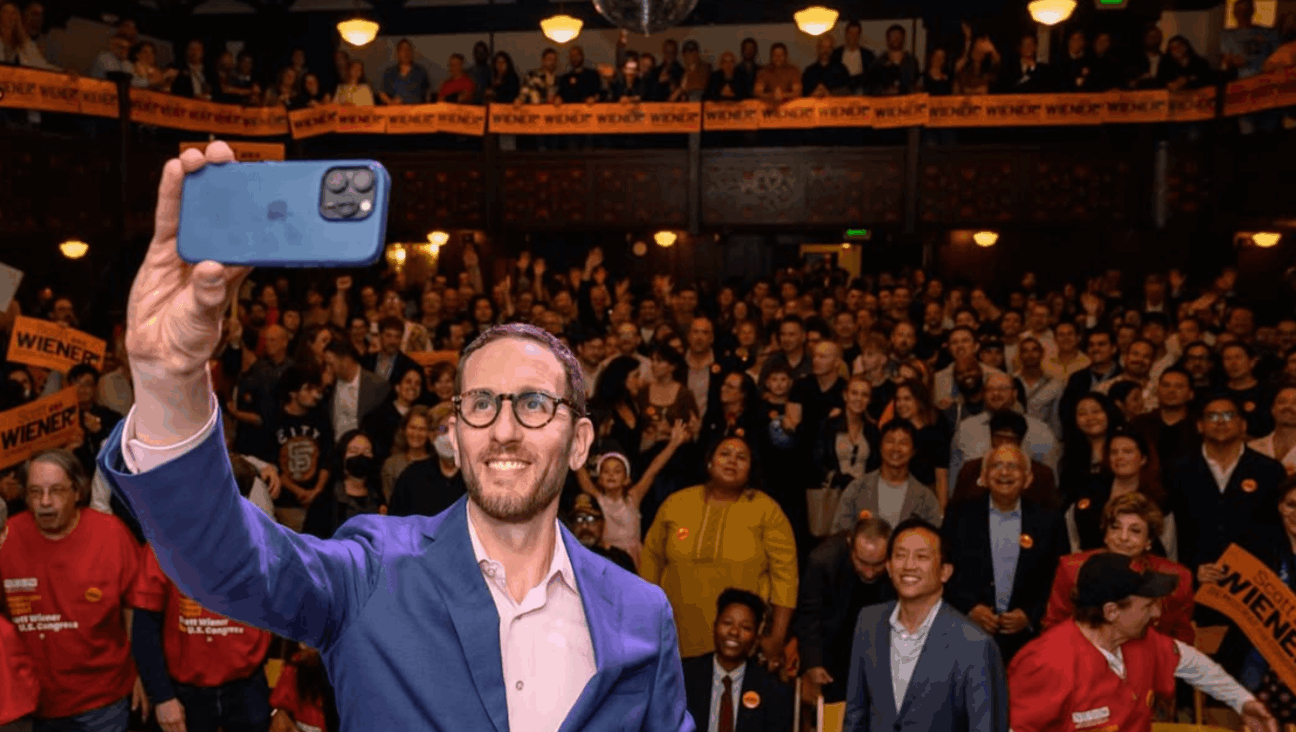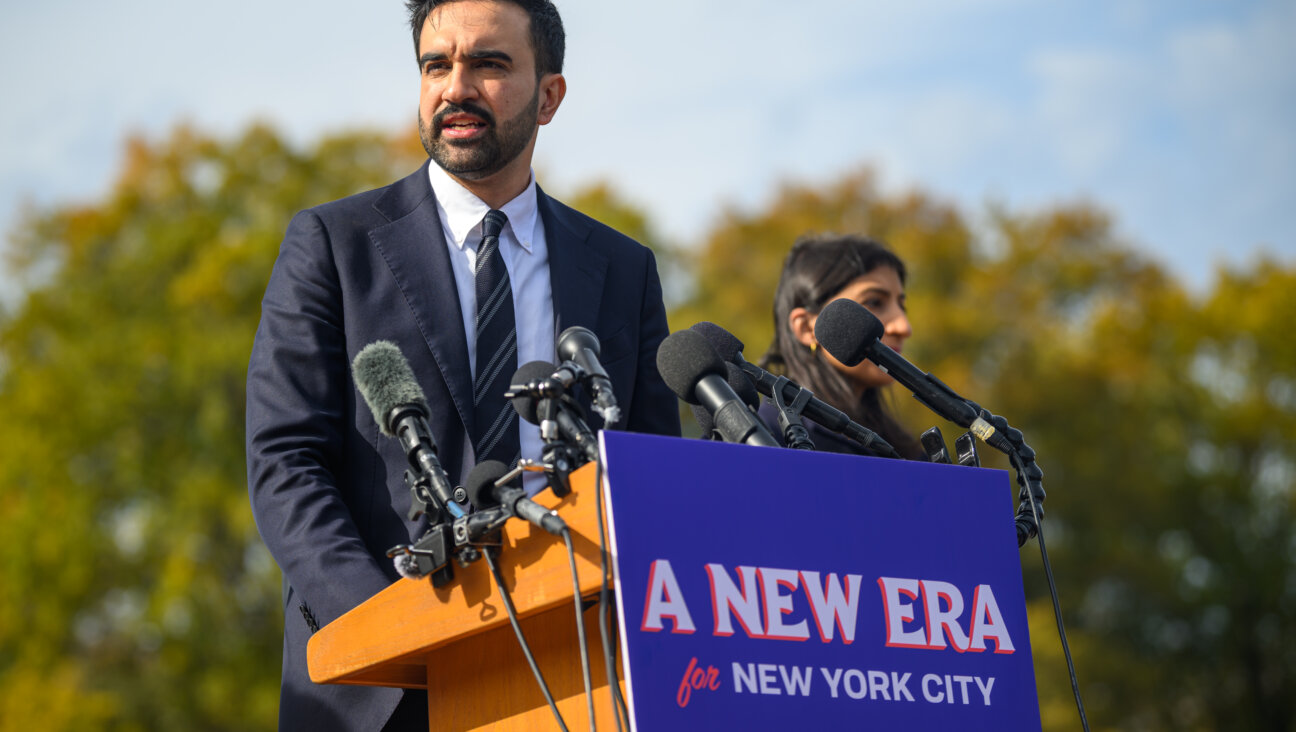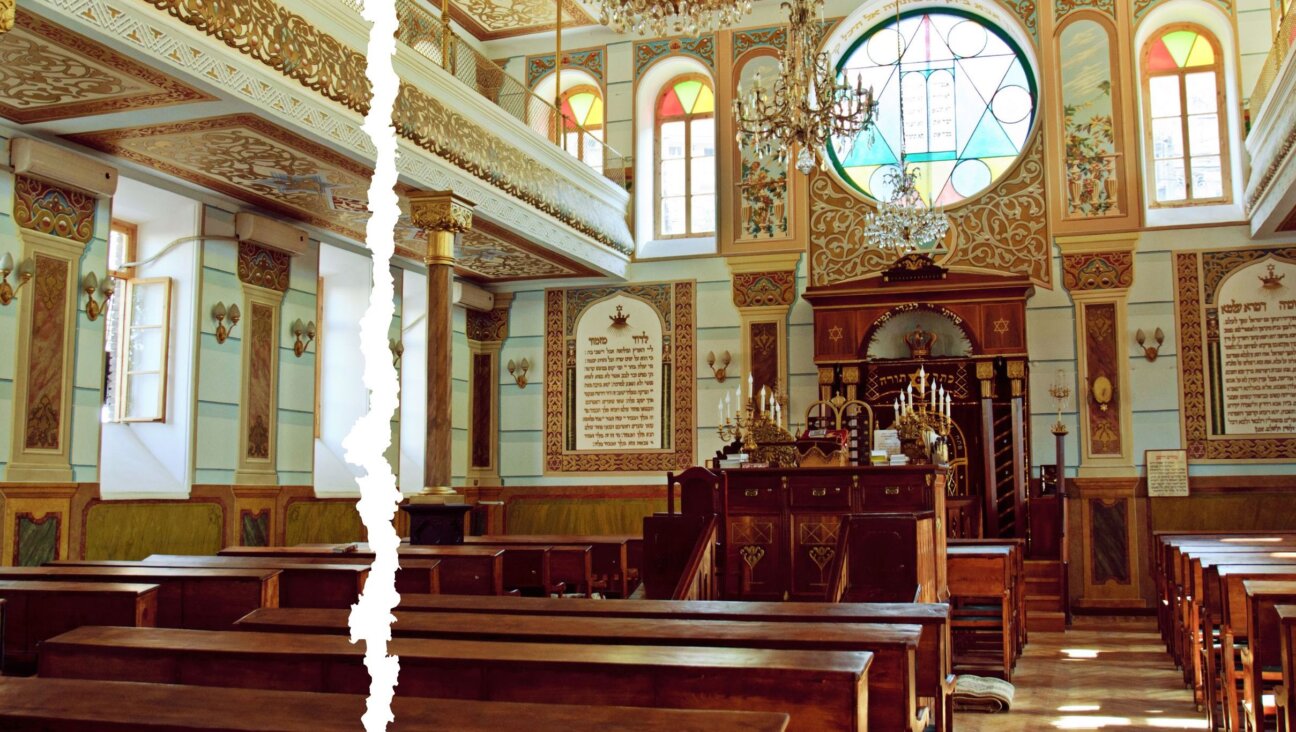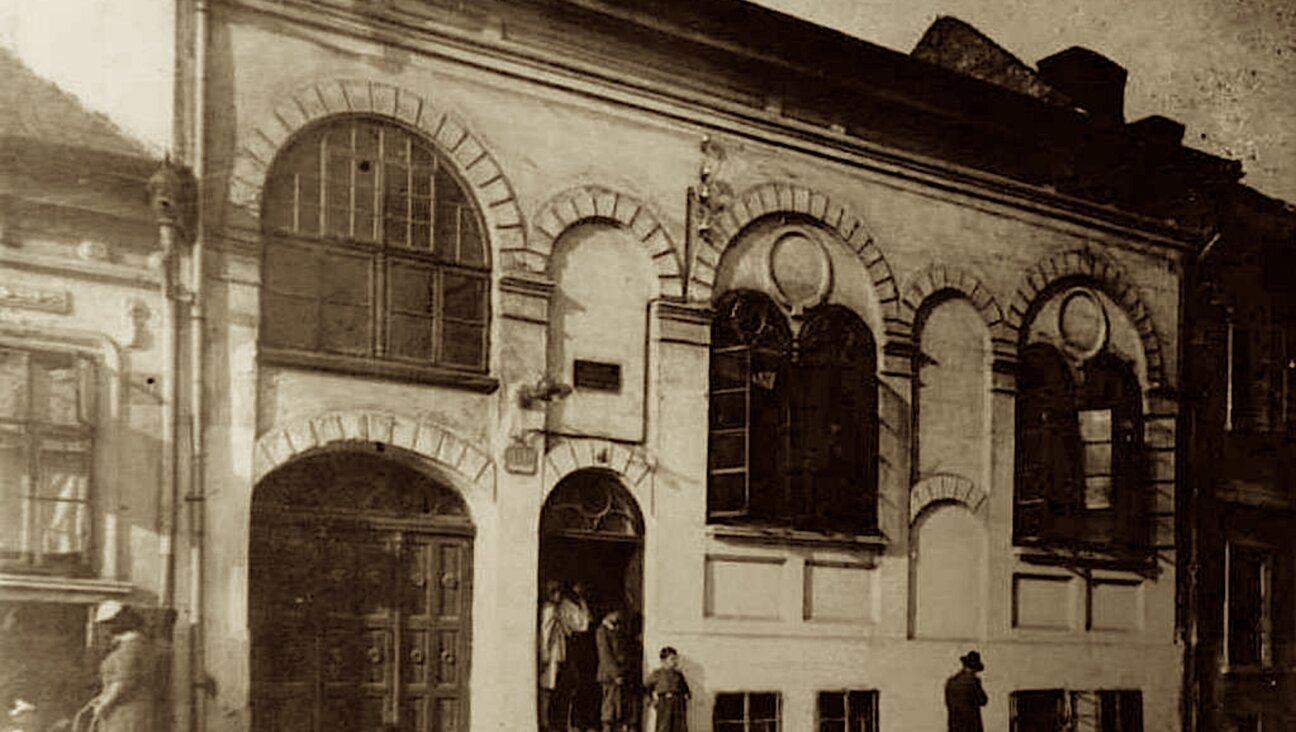The Heart of Israel’s Reform Judaism

Graphic by Angelie Zaslavsky
In this congregation, there is an excerpt from Psalms set to a tune the rabbi picked up in a French monastery; a prayer for peace in Arabic, contributed by a Malaysian Muslim and an annual expedition to a nearby home for the disabled, to spread cheer. Your typical Jerusalem synagogue it is not.
In the spring of 1985, a few months after moving to Jerusalem, Manhattan-born Rabbi Levi Weiman-Kelman placed an ad in a local newspaper. He was looking for people who, in a city where synagogues are overwhelmingly Orthodox, wanted a place to pray that was “creative” and “egalitarian.”
The congregation that grew from that ad is Kol HaNeshama, Israel’s largest Reform synagogue and possibly one of the most influential in the world. The congregation marks its 25th anniversary January 15, with an evening of celebration for members and some of its many admirers from overseas.
The celebration comes at a high point for the Israeli Reform movement. Begun in Germany in the 19th century, the Reform concept was imported to America. The movement flourished in the U.S. yet it has always had fewer adherents in Israel. But in the past two years, the Reform movement has increased its congregations to 35 from 26, learned from government research that 40,000 Israelis define themselves as Reform and has begun to receive some public resources for building synagogues.
Kol HaNeshama owes its success not only to its innovative approach to prayer, but also to the fact that it is a little slice of America in Jerusalem. While congregants dress down like Israelis, conduct proceedings in Hebrew and embrace Israeli informality, the model of community is distinctly American.
Most Israeli synagogues are largely functional, used for prayer by the committed religious and for little else. Kol HaNeshama is different. It has the kind of rabbinic faculty and full program of social and educational events common in American synagogues, and boasts numerous initiatives to bring in people from outside its community to sample services.
“Our idea was to bring what we consider the best of North American Jewish practices to Israel, and the real mark of success is that it doesn’t appeal just to immigrants. Israeli-born people today realize that they, too, need community, and are getting involved,” Weiman-Kelman, who is still the congregation’s rabbi, told the Forward.
The broad appeal of the Kol HaNeshama approach is evident from the diversity of the members. Anne Schiff, a law professor who moved to Jerusalem from Pittsburgh 18 months ago, said she found that the community “helped ease us into the transition.” Banker Amos Efraim, a Jerusalem native who grew up in a Sephardic Orthodox home, likes the “familylike” feel, sees his membership as a stand against growing religious intolerance in his city and has a sense of “fighting for the character of Jerusalem” by participating in the congregation.
Kol HaNeshama’s early days were difficult. The congregation was ejected from its first home, a Labor Party building, because of Orthodox pressure. At its second Simchat Torah celebration, a local municipal rabbi, Eliyahu Abergil, arrived with followers who protested noisily, telling congregants to “go back to America,” and then tried to remove the Torah scrolls.
The incident caused a national outcry, made Kol HaNeshama a household name, and led to Abergil and his followers tacitly agreeing to a truce. This came about when Weiman-Kelman and Abergil found themselves doing the rounds of radio and television studios for head-to-head interviews about the incident. “At a certain point, I said: ‘I know where you’re going next. I’ll give you a lift,” recalled Weiman-Kelman. He now has a “warm personal relationship” with Abergil, who is still a municipal rabbi.
Today, the synagogue building in the Baka section of Jerusalem, where the 300-family community has been based since 1992, is usually bustling with activity. There is a regular study program, a primer on Arab culture, a course that teaches Bible through clips from movies, the largest branch in the country of the Israeli Reform youth movement Noar Telem and a weekly English-language enrichment activity run by members for local underprivileged youth.
The prayer hall is spacious, brightly colored, light, airy and mostly single-level, communicating the congregation’s ideology through architecture: innovation, openness and egalitarianism. During its ultra-tuneful services Friday nights and Saturday mornings, it is often crowded, with numbers swelled by groups from abroad. The community’s large number of English speakers — still more than 50% of congregants — makes it an obvious stop for visitors to Jerusalem.
Gilad Kariv, head of the Israeli Reform movement, hails Kol HaNeshama as a “real pioneer in the area of Jewish liberal and progressive education which prepared the ground for the idea that communities are not only responsible for religious services, but also for education and building the next generation of progressive Judaism in Israel.” As a result of efforts by Kol HaNeshama members, their children can attend Reform educational institutions from age 1 to age 19.
Kariv also credits Kol HaNeshama, and its many visitors from the Diaspora, with spreading across Israel a “new understanding of liturgical music, the role of music in the service, and the bringing together of different liturgical traditions from within the Jewish people and from other cultures.”
While celebrating Kol HaNeshama’s silver anniversary, its leaders see challenges ahead. Yair Lootsteen, chairman of the congregation’s board, acknowledged: “The demographics are not with us.” Children of the predominantly immigrant founders are mostly native Israelis, for whom the immigrant support structure of Kol HaNeshama doesn’t have the same pull. And today, immigrants to Jerusalem from English-speaking countries are predominantly Modern Orthodox.
There is also the Jerusalem-wide trend of youngsters emigrating from the city because of the lack of affordable housing and other factors, which means that even members’ children who wish to stay involved are likely to leave Jerusalem.
Weiman-Kelman believes that the congregation’s future is bright — but he suspects that the demographic trends mean that its heyday as an Anglo community may be over. “It could be that we have peaked as a congregation for English speakers and need to concentrate on attracting people [who were] born here,” he said.
Contact Nathan Jeffay at [email protected]

